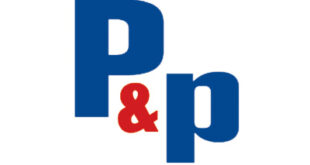Over 1,200 respondents around the world took part in FESPA’s Print Census, which was carried out between May 2014 and April 2015.
The findings show that there are six overarching trends which are driving the global wide format and speciality print community.
The findings are as follows:
1. Optimism – confidence swells on back of revenue growth
The key trend is one of optimism from business owners. 80% of respondents are very optimistic or fairly optimistic for their businesses.
This exceeds their optimism for the industry as a whole by 14%, indicating that respondents feel confident in their own business growth strategies, while remaining less sure of the industry’s broader ability to evolve.
2. Customer demands – print is a service industry
Customer demands are driving continued efforts to improve efficiency, enabling faster job turnaround, just-in-time delivery, delivery to the point of need, and versioning/personalisation.
At least 70% of respondents expect these four key customer trends to increase or stay the same, reinforcing the notion that today’s print businesses are now customer-service driven.
3. A changing product mix – from mass production to mass customisation
Banners (49%), posters (40%), signs (38%) and billboards (37%) remain the top four products being produced by respondents.
Dramatic growth is being experienced in textiles for garments, textiles for décor and packaging samples, with close to 80% of respondents reporting an increase in demand for these applications.
Respondents report increased use of digital production for many of these products, with garments, decals and printed electronics most frequently predicted to migrate to digital in the future.
The changing applications mix is also reflected in the rise of rigid materials, which now represent 25% of output among respondents.
4. Digital technology is the change enabler
Over half of all FESPA Print Census respondents indicated their intent to buy digital wide format printing equipment.
Purchasing plans are dominated by UV printers (27%), textile printers (21%), solvent printers (17%), eco-solvent printers (16%) and latex printers (14%). Contour cutters and laminators top respondents’ planned acquisitions in finishing.
The majority of those investing (45%) are motivated to do so by the move into new markets with new products or services.
Investment is also driven by the desire to enhance print quality (43%), increase capacity (37%), improve output speed (34%) and reduce unit costs (33%).
5. Textile print growth in graphics, garment, decor and industrial markets
Textile is the dominant growth application among Print Census respondents. 27% are already involved in garment printing, with 81% seeing growth in this segment, the highest of any growth application. Digital is a key enabler here, with over half of respondents expecting digitally produced garments to become an important alternative to traditional screen printing in the next two years.
Textile printers feature prominently among investment plans, with 21% of respondents specifically focusing spend in this area, supported by 12% planning to acquire thermal transfer equipment. Decorative and industrial textile applications also feature heavily, with 78% of those surveyed reporting growth in textiles for décor applications. Textile substrates continue to make inroads in the signage and graphics space, with 67% observing sustained growth in soft signage.
6. The future of sign and display printing is integrated with digital media
More than 75% of respondents expect live media and LCD screen advertising to impact the wide format business in the foreseeable future, with 36% of respondents stating that these technologies are already impacting the business.
FESPA CEO, Neil Felton, said: “The FESPA Print Census paints a clear picture of an energised community in which business leaders have a clear and positive vision of the future and are reaping the commercial rewards.
“The data that comes out of this Print Census regarding the growth of textile applications reinforces the importance of FESPA’s commitment to textile, through our regular FESPA Fabric event and the continued international roll-out of our Digital Textile conferences.”
The survey is part of an ongoing collaboration between InfoTrends and FESPA.
 Printwear & Promotion The Total Promotional Package
Printwear & Promotion The Total Promotional Package




